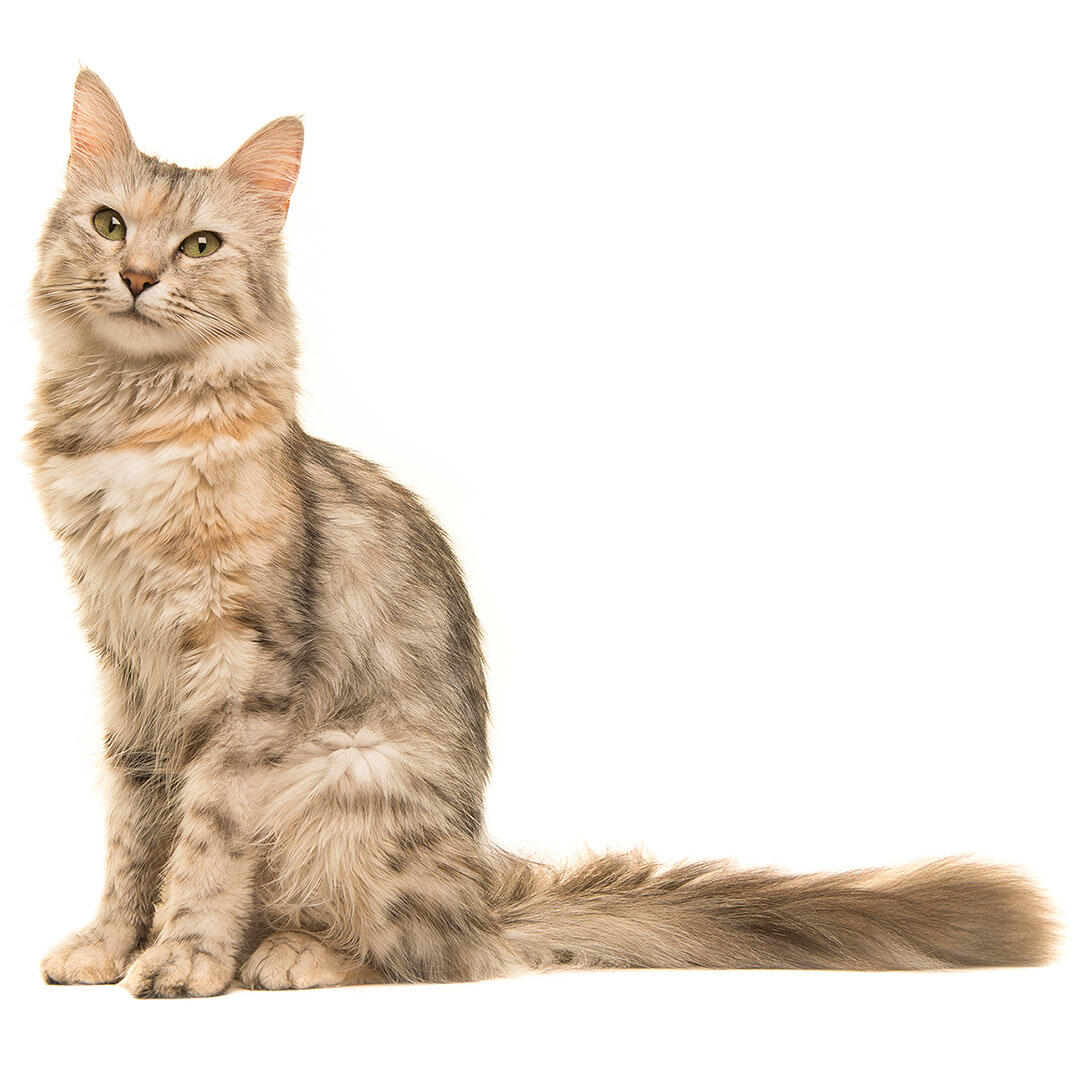
| Family-friendly: | 1/5 |
| Playfulness: | 5/5 |
| Intelligence: | 5/5 |
| Tendency to Vocalise: | 5/5 |
| Likes Other Pets: | 5/5 |
| Grooming needs: | 3/5 |
| Shedding: | 3/5 |
The Oriental Longhair breed can suffer from:
- Flat chested kitten syndrome which is a condition where the chest does not develop properly which can result in breathing difficulties.
Like their Siamese ancestors, the Oriental Long Hair is a lively, elegant and intelligent cat with high levels of energy, and curiosity. They bond well with family members and thrive on attention and affection. This is a very active cat, who enjoys supervising and being ‘helpful’, in other words, getting into your business, no matter what it is you are doing! They are slightly less chaotic and loud than the Siamese (particularly in comparison to the modern type Siamese) but this is still a lot of cat to handle, and not one to leave unsupervised for very long!
| Family-friendly: | 1/5 |
| Playfulness: | 5/5 |
| Intelligence: | 5/5 |
| Tendency to Vocalise: | 5/5 |
| Likes Other Pets: | 5/5 |
| Grooming needs: | 3/5 |
| Shedding: | 3/5 |
Developed in the UK in the 1950’s the Oriental Long Hair is effectively a Siamese cat of a different colour - in fact any colour except the traditional ‘pointed’ colours of the Siamese. Following World War 2, cats available for breeding were in short supply and the cross breeding with Siamese cats that followed is responsible for the development of the Oriental Short and Long Hair. The wide variety of coloured kittens became the Oriental breed, and the short haired colour pointed kittens went back to widen the gene pool of the Siamese breed.
Over the years the Oriental Long Hair has remained a moderate, classic Siamese type, rather than the modern very extreme wedge headed Siamese type.
Whilst the Oriental Long Hair will enjoy climbing around a well-furnished cat run or ‘catio’, and would certainly enjoy roaming free, the world is not a safe place for such a bold, curious and athletic cat. Keep them secure for their own safety, and to avoid the wrath of your neighbours, as the Oriental Long Hair can be a stealthy cat-burglar, adept at liberating goodies and prizes from other people’s homes!
The Oriental Long Hair really needs a home that is decorated and furnished with them in mind. You’ll need cat trees, jungle gyms, platforms and climbing frames galore. Pack away the knick-knacks and delicate ornaments too, as the Oriental will find fine sport in knocking these to the floor and in carrying small shiny objects around the house. Spend time devising ways to recreate hunting for food using food dispensing toys, as these will keep your Oriental Long Hair out of mischief, for a little while at least!
Every cat is unique and each has their own particular likes, dislikes, and needs when it comes to food. However, cats are carnivores and every cat must obtain 41 different and specific nutrients from their food. The proportion of these nutrients will vary depending on age, lifestyle and overall health, so it's not surprising that a growing, energetic kitten needs a different balance of nutrients in her diet than a less active senior cat. Other considerations to bear in mind are feeding the right quantity of food to maintain 'ideal body condition' in accordance with feeding guidelines and catering to individual preference regarding wet or dry food recipes.
The Oriental Long Hair needs a good brush through daily - this is an opportunity to bond with your cat and check them over for injury or parasites. A greasy coat is a sign your cat is not self-grooming at all and this may indicate poor health.
As with all cats, regular vaccination and parasite control is recommended.
The Oriental Long Hair is at the more extreme end of the cat scale, suited to owners who like pets who are active, clever and need plenty of interaction, and aren’t worried about odd foibles and quirks. Better for homes with adults and older children or teens, as they are very demanding on time and attention, and behaviour problems may result if their needs are not met.